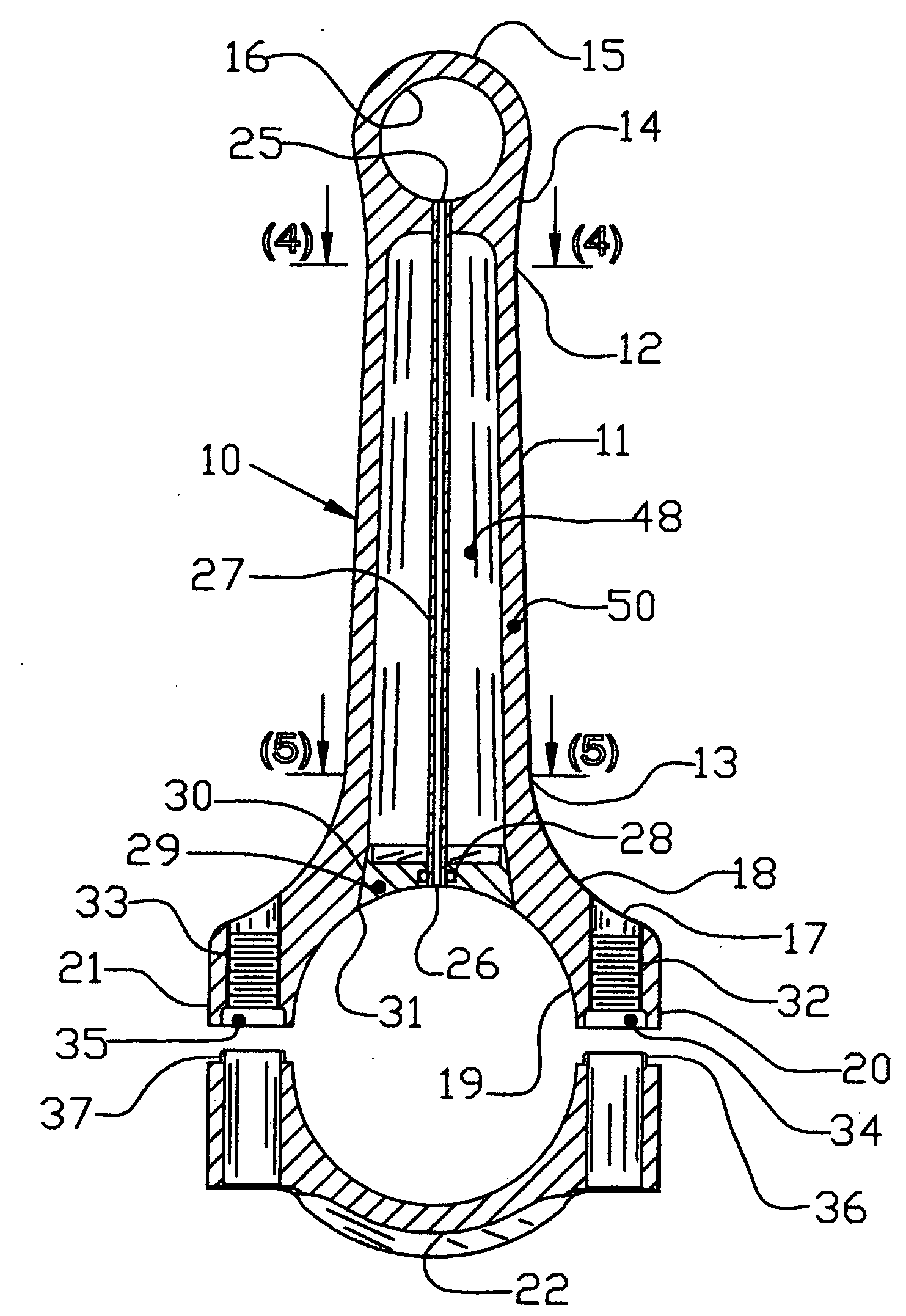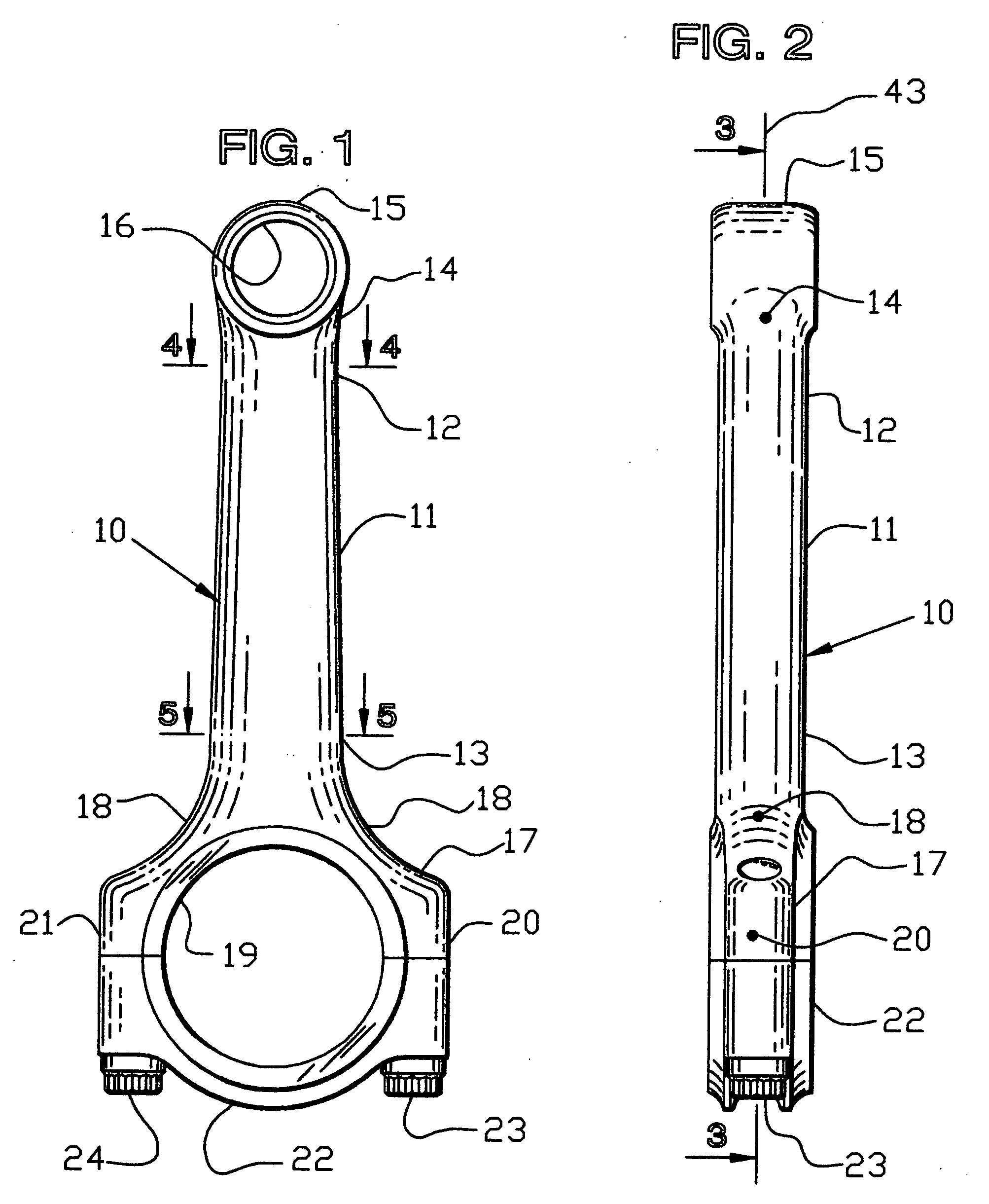Engine connecting rod for high performance applications and method of manufacture
a technology of connecting rods and high-performance engines, applied in the direction of process and machine control, mechanical control devices, instruments, etc., can solve the problems of increasing stress in the connecting rod, affecting engine performance, etc., and achieves the effect of simplifying and facilitating accurate and analyzed connecting rod design, and reducing the number of elements
- Summary
- Abstract
- Description
- Claims
- Application Information
AI Technical Summary
Benefits of technology
Problems solved by technology
Method used
Image
Examples
Embodiment Construction
[0030] A general description being presented, with reference to FIG. 1 and FIG. 2 of the drawings there depicted a hollow connecting rod 10 for use in high performance engines. The connecting rod 10 comprising an elongate longitudinal beam member 11 having two opposite ends 12, 13 each forming a one-piece connection. Connection to first end 12 having blended arcuate sides 14, joining piston pin connecting boss member 15 having a round bearing surface 16, for cooperating with a piston pin (not shown). At beam member 11 opposite second end 13 is a crankshaft journal connecting member 17, having blended arcuate sides 18, including a round bearing surface 19 for cooperating with a bearing insert and crankshaft journal when secured thereto (not shown). Connecting member 17 having bolt boss 20, 21, secured thereto cap member 22 and bolts 23, 24. As noted in FIG. 1, beam cross-sections cut lines 4-4 and 5-5 define the beam member 11 by placement of profile cross-section placed at each cut ...
PUM
| Property | Measurement | Unit |
|---|---|---|
| Thickness | aaaaa | aaaaa |
| Concentration | aaaaa | aaaaa |
| Tensile properties | aaaaa | aaaaa |
Abstract
Description
Claims
Application Information
 Login to View More
Login to View More - R&D
- Intellectual Property
- Life Sciences
- Materials
- Tech Scout
- Unparalleled Data Quality
- Higher Quality Content
- 60% Fewer Hallucinations
Browse by: Latest US Patents, China's latest patents, Technical Efficacy Thesaurus, Application Domain, Technology Topic, Popular Technical Reports.
© 2025 PatSnap. All rights reserved.Legal|Privacy policy|Modern Slavery Act Transparency Statement|Sitemap|About US| Contact US: help@patsnap.com



